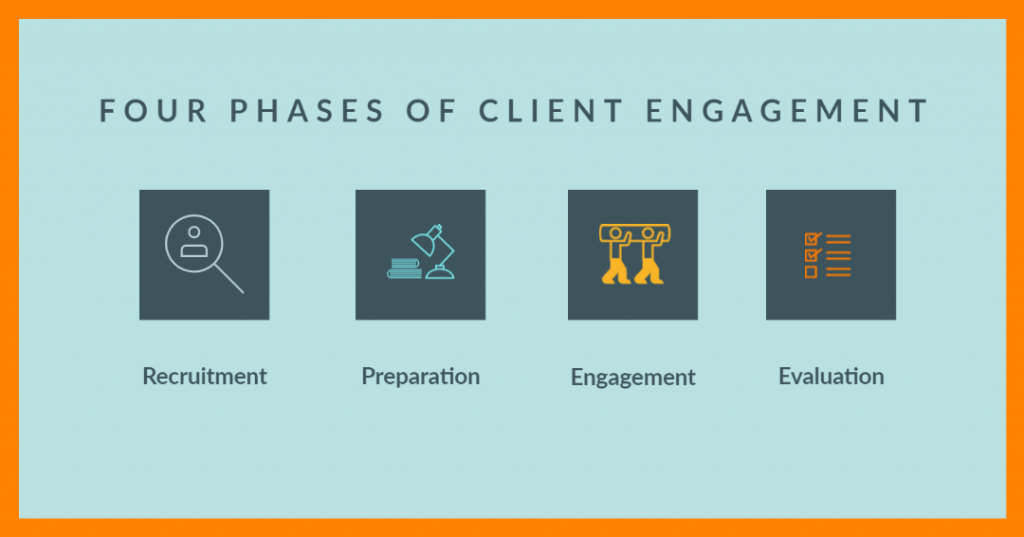I hope you decide to join this win-win situation where graduate students design online learning components for your department or program at UTK!

The students are all pre-approved in their department to take this class, and they have skills in instructional design and many software packages. These students are driven, talented and ready to gain real world experience by helping clients with training development.
Your Role as a Client
The practicum takes place in as a summer course, but the instructor and clients get ready for it throughout the academic year. The process for client engagement can be divided into four phases.
Phase 1: Recruitment
The first phase is the recruitment phase, which seeks to establish a mutually beneficial relationship with clients who have any need for online learning such as training, education, or information products.
Client responsibilities overall include providing a content outline in advance (preparation), reviewing content development and communicating with students during the summer course (engagement), and completing end of course evaluations (evaluation).
Phase 2: Preparation
The preparation phase usually takes place in late Fall into Spring where I will meet with the clients in person or online to discuss the practicum. Once interest moves to commitment to participate, you will need to provide a content outline and start to gather content to be used in your project. You will be given access to an O365 folder to collect your materials for the student who will work on your project. You can also provide a document that list URLS of aspirational materials (developed elsewhere), scans, photos, etc. Folders need to be populated in early May.
Phase 3: Engagement
During the summer semester, you will engage with students during the practicum to develop a plan and timeline for your project, review versions and provide feedback, as determined between you and your student designer. You will be asked to provide feedback within 24 hours (during the normal M-F work week) during the month of June and within 48 hours during the month of July.
Phase 4: Evaluation
At the end of the semester, you will be asked to complete an evaluation rubric which contributes to the student’s overall grade (evaluate). I will provide the rubric to you. In the end, you will receive ownership of product developed, such as training, education, or information products.